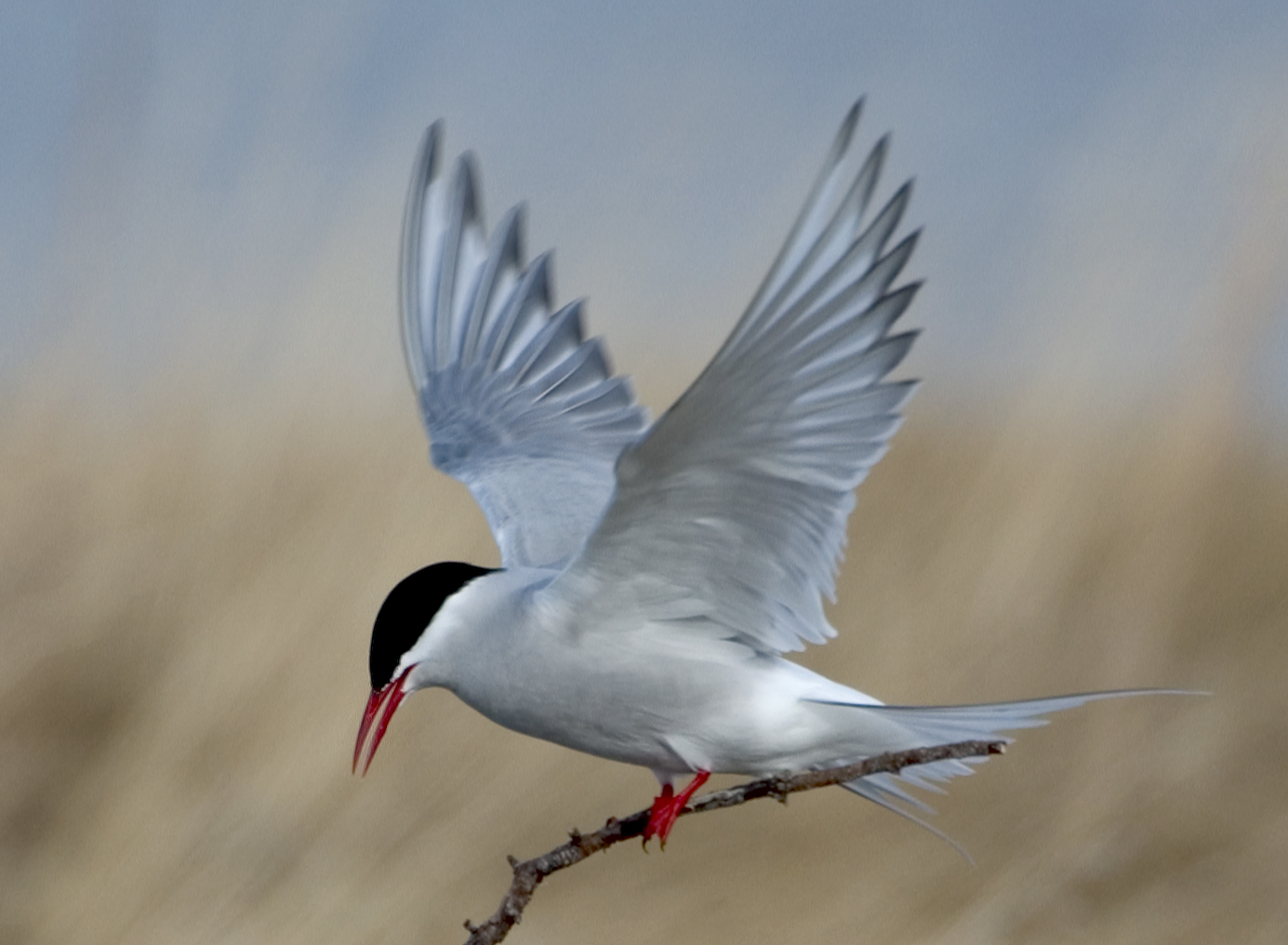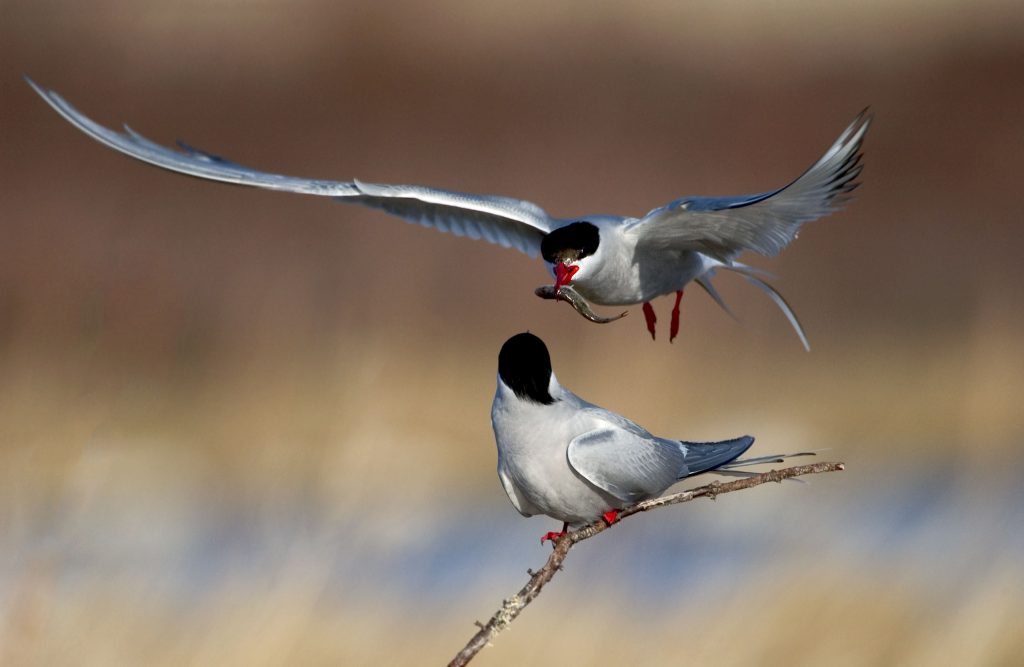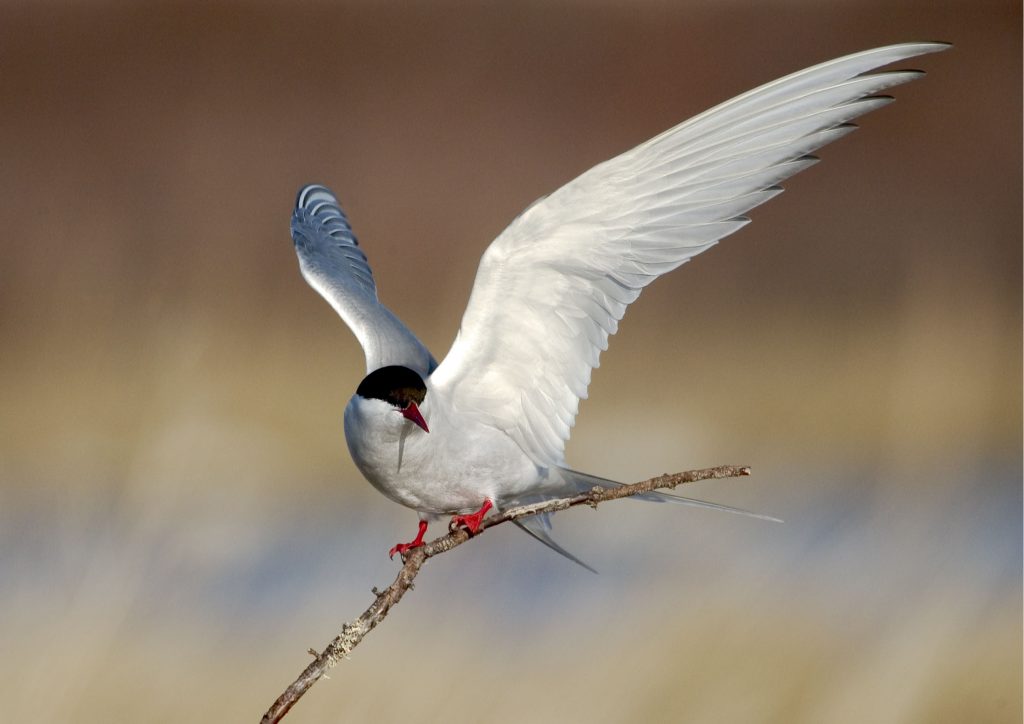
The Arctic tern (Sterna paradisaea) is a migration master and the record-holder for the longest migrating bird on the planet. These endurance fliers migrate from pole-to-pole, ranging from 25,000-45,000 miles round-trip, depending on whether one measures straight-line flight or the meandering route the birds take based on prevailing winds, as well as where an individual bird begins and ends its journey. Of course, their long, tapered wings are ideally adapted to such outstanding flights.
Because of their long journey, the Arctic tern has two summers to enjoy, the Arctic summer as well as the Austral summer. That timing means these birds see more daylight in one year than any other creature on Earth, and that daylight is critical for amazing photos that show off their sleek plumage and subtle silvery sheen. Getting a glint in their eye is even better, and highlights their intelligent expressions.
When the Arctic tern’s long lifespan (25-30 years or longer) is considered, an individual bird may fly 650,000 miles or more in its lifetime, the equivalent of flying from the Earth to the moon nearly three times. While the rockets humans have sent to the moon make that trip on enriched chemical fuels, Arctic terns fuel their journeys with a diet of fish, which they dive into the surface of the water to catch.
With their extreme northern range, these birds can be a challenge to find and photograph, but it’s a challenge well worth meeting to get to know such phenomenal birds.
Text adapted in part from Migration: Exploring the Remarkable Journeys of Birds; used with permission.






